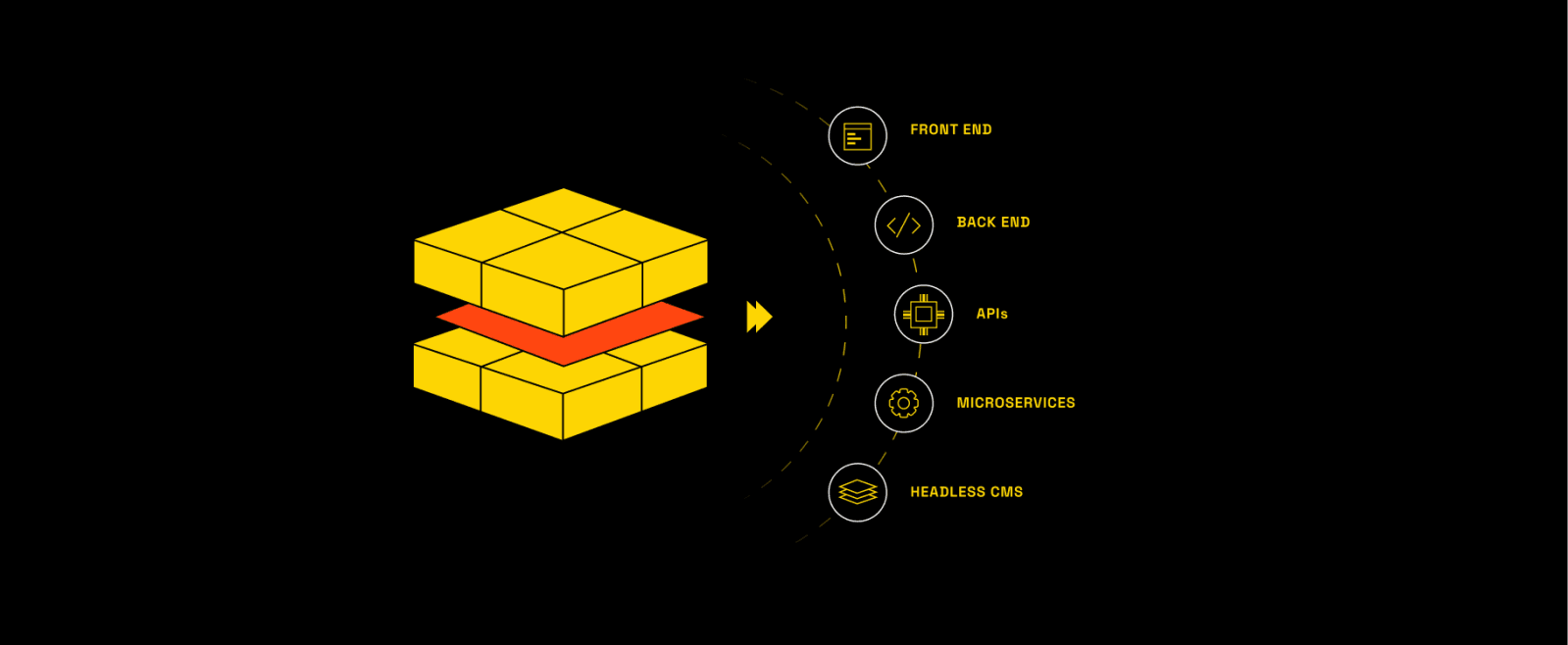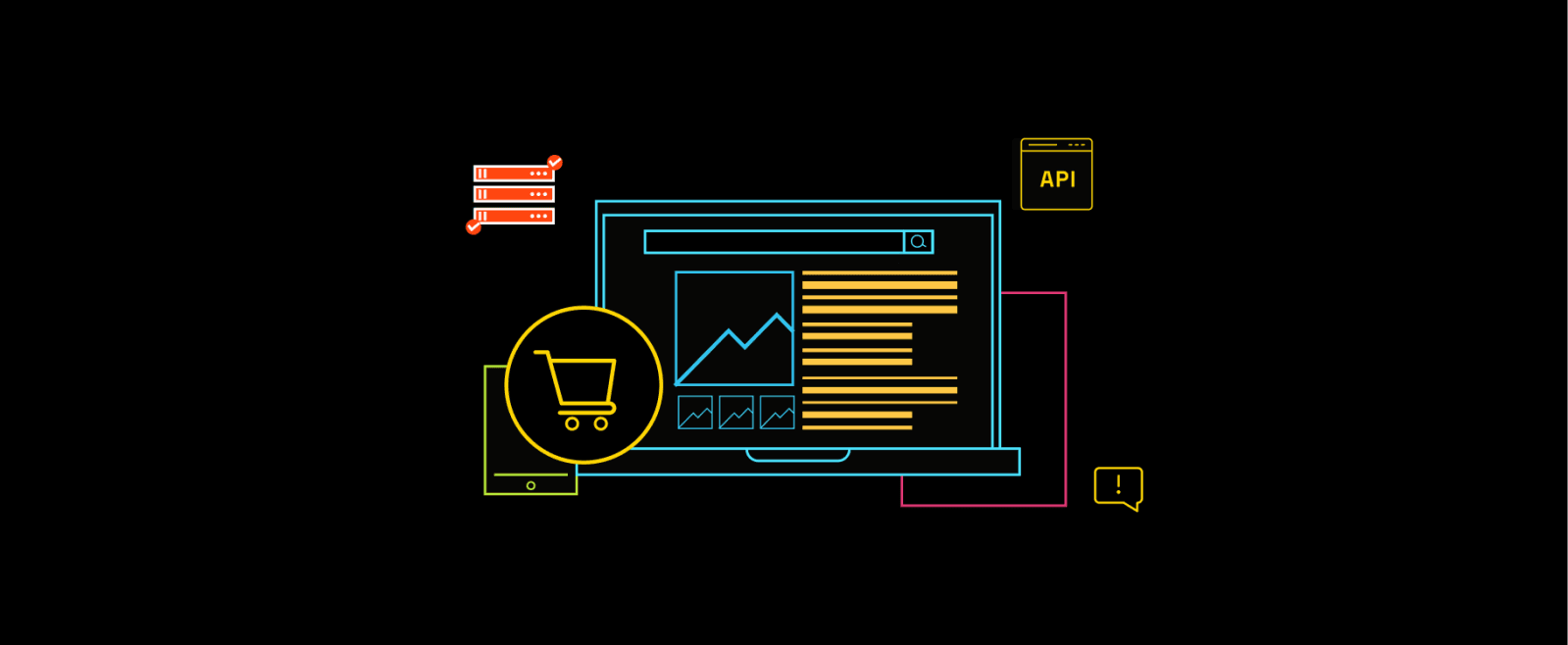7 Benefits of Headless Commerce to Help You Win at eCommerce
As an owner of an online store, it's important to provide a smooth experience for customers. The world of online shopping is always changing, and to stay ahead, it's important to use new technology. One new way of doing this is called headless commerce architecture. It's a modern approach that gives you flexibility and room to grow, so you can keep up with what customers want.
In this article, we talk about the advantages of headless commerce and how it can change your eCommerce strategy. We will look at how it can improve customer experiences and consider whether it's suitable for all eCommerce stores or if it's especially helpful for certain business models.
What are the Benefits of Headless Commerce?
Consider headless commerce for your eCommerce strategy. It offers enhanced customization capabilities and faster website performance. These benefits streamline operations and improve the customer experience.
Understanding these headless commerce benefits will help you leverage headless technology effectively to meet your business needs and customer expectations.
1. Enhanced Site Performance and Speed
How quickly your online store loads can significantly impact its success. Although traditional online stores have gotten faster, headless commerce architecture has specific benefits for improving performance that other systems can't match.
Decoupling in headless architecture allows developers to improve the front and back end separately. This makes it possible to use modern web technologies like Progressive Web Apps (PWAs) and Single Page Applications (SPAs). These technologies are designed to load only essential resources, significantly reducing the amount of data transmitted over the network, which can dramatically improve load times.
Moreover, with headless architecture, content delivery can be further optimized through advanced caching mechanisms and content delivery networks (CDNs). Since the front end is essentially a client fetching data via APIs, it can retrieve pre-stored data from edge servers closer to the user. This accelerates access times and minimizes latency and the impact of high traffic on server performance.
The use of APIs in headless commerce also contributes to performance gains. APIs allow for more efficient data handling and can be scaled independently of the front end, ensuring the system remains responsive and agile under varying loads. This flexibility enables eCommerce businesses to maintain high performance across all customer touchpoints, regardless of the complexity or volume of transactions.
Headless commerce allows businesses to make their websites faster and more responsive using the latest web technologies and architectural approaches. This helps businesses provide better user experiences and retain customer interest and loyalty in today's fast-paced world.
In essence, the agility offered by headless commerce in utilizing the latest web technologies and architectural approaches enhances site speed. It improves overall system responsiveness, making it a superior choice for businesses aiming to deliver exceptional user experiences. This strategic advantage is crucial in retaining customer interest and loyalty in an increasingly impatient world where every second counts.
2. Create a Unique Brand Identity
Traditional eCommerce platforms usually limit customization to preset themes and functionalities, limiting your ability to represent your brand's uniqueness truly. However, headless commerce turns this limitation into an opportunity.
Headless commerce architecture allows for a high level of customization beyond just looks. It also applies to how your e-commerce operations work, letting you add unique features tailored to your audience's preferences and behaviors. This could include custom product suggestions, special loyalty programs, or interactive elements to boost user engagement. With headless commerce, you have the tools to innovate at your fingertips.
Using APIs, you can easily incorporate advanced technologies. This includes adding features like augmented reality (AR) displays and personalized AI-driven shopping assistants. These additions can help you create unique and memorable experiences for your customers, which can build strong loyalty to your brand.
Remember this: Embracing headless commerce isn't just about getting away from one-size-fits-all solutions. It's about creating a unique shopping experience. By customizing your site's design and functionality to match your brand's identity, you stand out from the competition and build a solid and loyal customer base who wants to return.
3. Accelerate Experimentation and Innovation
Headless commerce architecture allows frontend teams to explore and adopt new technologies independently of backend constraints, facilitating swift and flexible development.
With headless commerce, your development team can implement and test new frontend features without affecting backend operations. This freedom is crucial for experimenting with emerging technologies like advanced JavaScript frameworks, CSS animations, or interactive UI elements. It enables developers to enhance the user experience continually and adapt to market trends with agility.
This architectural flexibility also streamlines the deployment of updates and new features, allowing for quicker iteration cycles. Development teams can roll out changes in a controlled and isolated environment, minimizing the risk of disruptions to the core system. This leads to a more robust, responsive, and innovative eCommerce platform.
By leveraging headless commerce, you empower your team to drive technological advancements and deliver a cutting-edge shopping experience, thereby maintaining a competitive edge in the digital marketplace.
4. Seamlessly Integrate Third-Party Capabilities
The ability to integrate third-party services directly into your eCommerce platform is crucial for providing a seamless user experience. Traditional eCommerce platforms often struggle with this integration due to their monolithic architecture, which can limit flexibility and adaptability.
With its API-first design, Headless commerce architecture simplifies the integration of third-party applications and services. This architecture separates the frontend user interface from the backend processes, allowing each to communicate through well-defined APIs. This setup is ideal for adding advanced payment options like Google Pay, Apple Pay, or PayPal without disrupting the core functionality of the eCommerce system.
Integrating these payment processors streamlines the checkout process and enhances customer trust by offering familiar and secure payment methods. Furthermore, the flexibility of headless commerce extends to integrating other third-party functionalities, such as CRM systems, marketing automation tools, and customer support services, all of which can contribute to a superior shopping experience.
With headless commerce, businesses can easily adapt to evolving market demands and consumer preferences, ensuring that their eCommerce platform remains competitive and relevant.
5. Boost Sales by Enhancing Conversions
The ability to convert browsing visitors into paying customers is crucial. Headless commerce architecture significantly enhances this capability by providing a highly customizable and flexible environment for creating user-centric shopping experiences.
Personalized User Experiences: Headless commerce leverages API-driven interactions, which enable the frontend to operate independently of the backend. This separation allows for the implementation of advanced personalization algorithms without overloading the backend systems. For instance, machine learning models can dynamically adjust content, offers, and product recommendations based on user behavior, increasing the relevance of their shopping experience.
Rapid Iteration and A/B Testing: The agility of headless setups facilitates rapid deployment of changes, allowing businesses to quickly iterate on the user experience. This is particularly advantageous for conducting A/B tests, which can be used to refine elements such as call-to-action buttons, layout designs, and checkout processes. By continuously testing and optimizing these elements, eCommerce sites can significantly improve conversion rates.
Seamless Integrations with Advanced Tools: With headless commerce, it's easier to integrate cutting-edge technologies that enhance the shopping experience. For example, integrating augmented reality (AR) tools allows customers to visualize products in their own space before making a purchase, which can dramatically reduce buyer hesitation and boost conversion rates.
Optimized Performance Across Devices: Headless commerce ensures that the user interface is optimized for various devices, from mobile phones to desktops. By utilizing modern frontend delivery technologies like Progressive Web Apps (PWAs), eCommerce businesses can offer fast, app-like experiences on the web. Faster load times and smoother interactions contribute to a reduction in bounce rates and an increase in conversions.
Customizable Checkout Experiences: The checkout process can be fully customized to minimize friction. Headless commerce allows for the creation of a streamlined checkout that removes unnecessary steps and tailors the flow based on user data, significantly enhancing the likelihood of purchase completion.
6. Omnichannel Capability
Consumers expect a seamless and consistent shopping experience across all platforms, whether browsing on a desktop, a mobile device, or a tablet. Headless commerce architecture meets these consumer expectations by enabling truly omnichannel experiences.
Seamless Integration Across Platforms: Headless commerce is built on a foundation of APIs, allowing seamless data integration across various customer touchpoints. This architecture enables businesses to maintain a consistent brand experience by synchronizing content, products, and user interactions across multiple channels. Whether customers switch from mobile apps to desktop sites or interact through social media platforms, their experience remains fluid and uninterrupted.
Device-Agnostic Front Ends: Headless commerce allows for the development of device-agnostic user interfaces by decoupling the frontend presentation layer from the backend logic. This means the same backend services can support various frontend deployments, from traditional web browsers to mobile apps and even emerging IoT devices, without duplicating functionality for each platform.
Enhanced Personalization Across Channels: With headless commerce, personalization engines can utilize APIs to fetch and update user-specific data across all devices and channels in real time. This enables businesses to provide consistent, personalized content, recommendations and offers regardless of how or where a customer interacts with the brand.
Improved Customer Loyalty and Retention: The ability to provide a consistent and personalized shopping experience across all channels significantly enhances customer satisfaction, fostering brand loyalty. Customers are more likely to return to a platform that remembers their preferences and provides a hassle-free shopping experience on every device.
Agility in Updating User Experiences: The headless approach allows marketers and designers to update the frontend experience quickly without impacting backend systems. This agility is crucial for keeping up with the fast pace of consumer behavior changes and technological advancements, ensuring that the omnichannel experience stays relevant and engaging.
Improved Security and Scalability
Headless commerce architecture strategically decouples the interface customers interact with from the core systems that manage data and transactions. This approach inherently bolsters security, as it restricts direct access to backend databases and systems. Only essential data is exchanged via secure, tightly controlled APIs, which significantly reduces the surface area for potential cyber attacks. These APIs can be fortified with advanced authentication and encryption methods to safeguard sensitive customer information.
Scalability is also markedly enhanced in a headless setup. The backend infrastructure, now solely focused on data processing and business logic, can dynamically scale resources based on varying loads without the overhead of content delivery. This ensures that the system remains resilient and performant, even during peak traffic periods. Utilizing microservices architecture, components such as inventory management or payment processing can scale independently, optimizing resource use and minimizing service interruptions for ongoing operational efficiency.
Is Headless Commerce the right choice for all eCommerce stores?
So, you've been reading about headless commerce. But should every eCommerce store consider it?
Not necessarily. The headless approach may not be suitable for every eCommerce store. It depends on your goal and whether the headless approach aligns with your business goals.
So, when is headless commerce a good fit for a business then?
I've created some scenarios for you to think about. If you can relate to at least one of them, it might be worth your time to learn more about headless commerce:
- “As an online retailer, I need to be able to quickly and easily update my website with new products, promotions, and content. I want to use a CMS like WordPress or Drupal to manage my website's content while using a separate e-commerce platform to handle the shopping cart and checkout process. This will allow me to make changes to my website without interfering with e-commerce functionality & vice versa.”
- “As a mobile app developer, I want to offer in-app purchases to users without building an entire e-commerce platform from scratch. Like, using an e-commerce API like Stripe or Braintree to handle the payment processing while creating a custom front-end for the app. By doing this, I won't have to spend months creating an e-commerce platform and can instead provide users a seamless and integrated shopping experience.”
- “As a B2B business, I need to be able to offer custom pricing and discounts to my clients based on their order history and other factors. I want to use a separate pricing and promotions engine like Zaius or Klaviyo to handle these custom pricing rules while using an independent e-commerce platform like Magento to operate the shopping cart and checkout process. My goal is to provide my customers with customized pricing without compromising the functioning of my eCommerce platform.”
- “As a media company, I want to offer subscription-based access to my content without having to manage the e-commerce platform myself. Basically, combining subscription management platforms like Zuora or Chargify to handle the subscription billing with a separate CMS like WordPress or Ghost to manage the content. I can focus on creating high-quality content without worrying about the complexities of managing a subscription e-commerce platform.”
Conclusion
Now that we've broken down the headless commerce concept, let's get real. Going headless means going API-first, and that's a big deal. Here's what you'll get out of it:
- First, you'll build dope digital experiences that stand out and truly reflect your brand. You'll be able to make it look and feel however you want; no more cookie-cutter sites.
- Secondly, you'll have the agility to move fast, real fast. Updating your site or app ten times quicker than before will give you the edge over your competition, and you'll be able to move like lightning.
But wait, there's more. With headless commerce, you can build the most flexible site architecture ever. You can choose the best functionalities from different vendors to create a truly custom solution that's perfect for your unique business needs and your customers.
So, if you want to build something extraordinary, headless commerce is the only way to go.
FAQs
Why is headless better?
Headless architecture is better because it allows businesses to select the best solutions for their specific requirements rather than being constrained by pre-packaged options. It also allows for greater flexibility, shorter time-to-market, and better customer experiences.
When should I opt for headless commerce?
If you're at a point where your business model needs frequent adjustments to the digital commerce experience and you want to provide unique, tailored, and adaptable customer experiences across various channels, then Headless is for you.
What are the cons of headless commerce?
The main disadvantage of headless commerce is that it can be more expensive to implement and maintain than traditional commerce solutions. Additionally, businesses may need specialized technology and personnel to maximize their benefits.
Is headless commerce a future-proof solution?
Yes, it’s a major benefit of headless commerce. The ability to continuously evolve and modify digital commerce experiences as technology and customer needs change over time makes headless commerce a future-proof solution.






